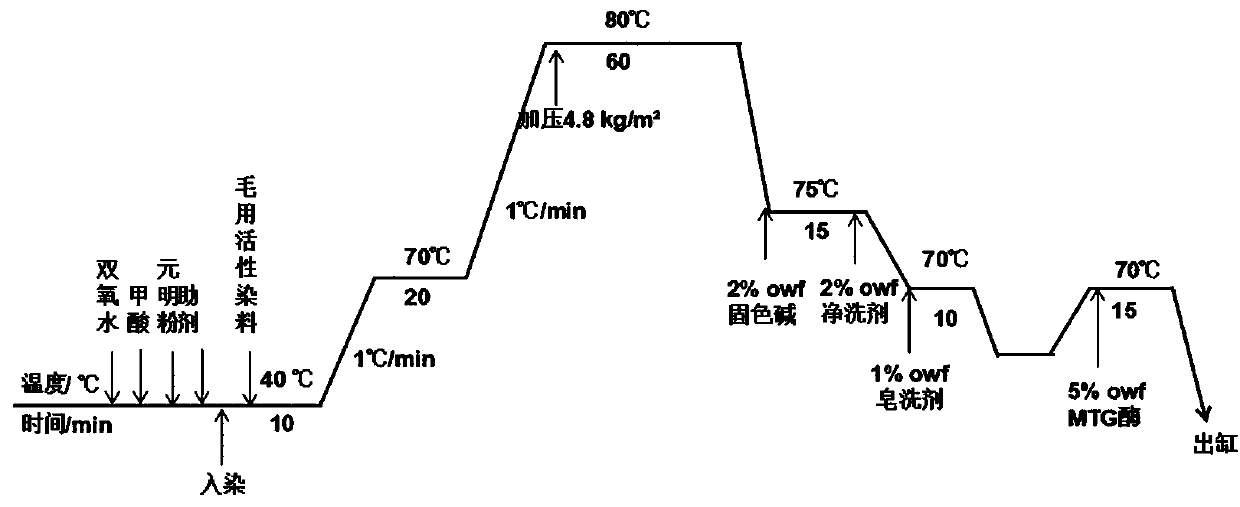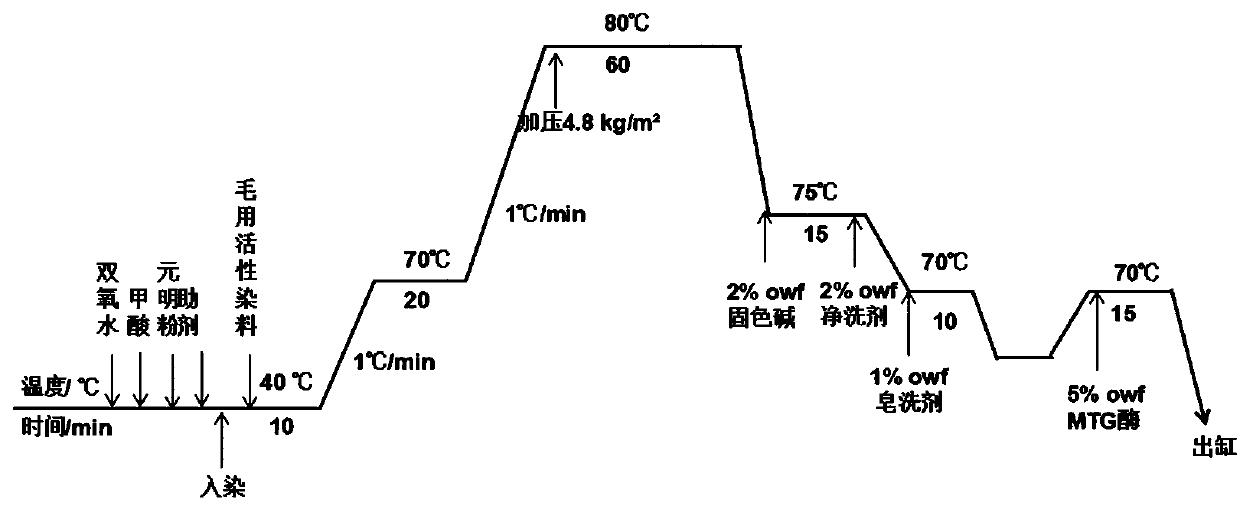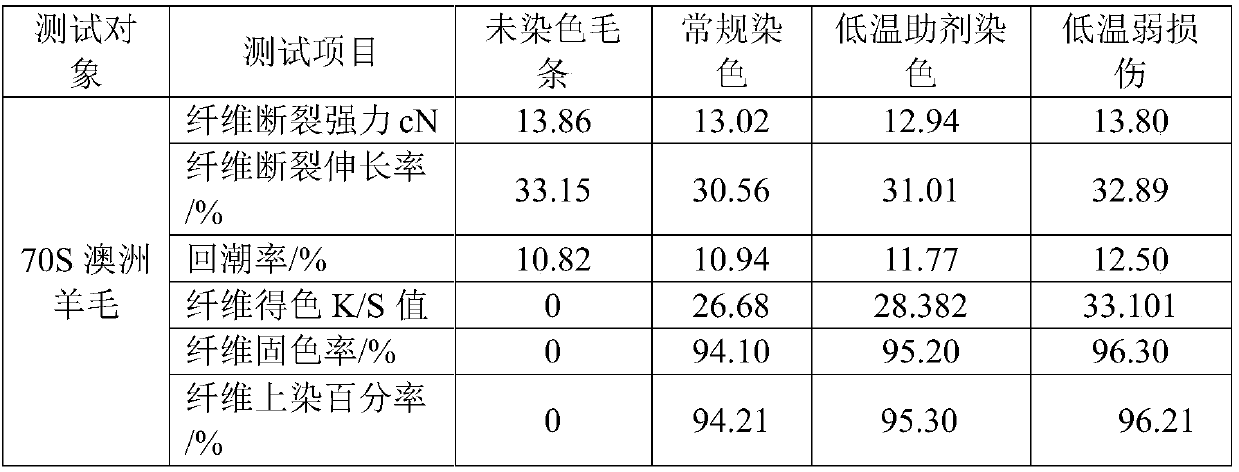Low-temperature weak-damage wool dyeing process
A wool, low temperature technology, applied in dyeing, textile and paper making, etc., can solve the problems affecting the fiber feel, luster, vividness, dye uptake rate, reduction of color fixing rate, damage to the scale structure on the surface of wool fiber, etc. Reduced wool fibre damage, shorter dyeing times and lower dye usage
- Summary
- Abstract
- Description
- Claims
- Application Information
AI Technical Summary
Problems solved by technology
Method used
Image
Examples
Embodiment 1
[0029] Wool Raw Material Indicators:
[0030] 70s Australian wool strips;
[0031] Selection and dosage of dyes and auxiliaries:
[0032] Reactive dyes for wool Black ARC, concentration 2.5% (owf); Navy blue ARC-B01, concentration 0.5% (owf);
[0033] Main auxiliary parameters:
[0034] The concentration of formic acid is 2%; the dosage of Yuanming powder is 2% (owf); the dosage of hydrogen peroxide is 15% (owf); the MTG enzyme is 5% (owf).
[0035] A low-temperature and weak-damage dyeing process for wool, such as figure 1 As shown, proceed according to the following process steps:
[0036] (1) Pre-treatment: Put the wool ball into the washing machine, add 2% (owf) washing liquid and adjust the pH to 7.5, and keep the water temperature at 55°C for 10 minutes. After washing, dry the wool quickly, and put it into the dyeing vat for water to keep the water circulation system running normally;
[0037] (2) Hydrogen peroxide-formic acid oxidation pretreatment: heat up ...
Embodiment 2
[0048] Wool Raw Material Indicators:
[0049] 70s Australian preshrunk wool strips
[0050] Selection and dosage of dyes and auxiliaries:
[0051] Reactive dyes for wool Black ARC, concentration 2.5% (owf); Navy blue ARC-B01, concentration 0.5% (owf);
[0052] Main auxiliary parameters:
[0053] The concentration of formic acid is 2%; the dosage of Yuanming powder is 2% (owf); the dosage of hydrogen peroxide is 15% (owf); the MTG enzyme is 5% (owf).
[0054] A low-temperature and weak-damage dyeing process for wool, such as figure 1 As shown, proceed according to the following process steps:
[0055](1) Pre-treatment: Put the wool ball into the washing machine, add 2% (owf) washing liquid and adjust the pH to 7.5, and keep the water temperature at 55°C for 10 minutes. After washing, dry the wool quickly, and put it into the dyeing vat for water to keep the water circulation system running normally;
[0056] (2) Hydrogen peroxide-formic acid oxidation pretreatment: ...
PUM
 Login to View More
Login to View More Abstract
Description
Claims
Application Information
 Login to View More
Login to View More - R&D
- Intellectual Property
- Life Sciences
- Materials
- Tech Scout
- Unparalleled Data Quality
- Higher Quality Content
- 60% Fewer Hallucinations
Browse by: Latest US Patents, China's latest patents, Technical Efficacy Thesaurus, Application Domain, Technology Topic, Popular Technical Reports.
© 2025 PatSnap. All rights reserved.Legal|Privacy policy|Modern Slavery Act Transparency Statement|Sitemap|About US| Contact US: help@patsnap.com



